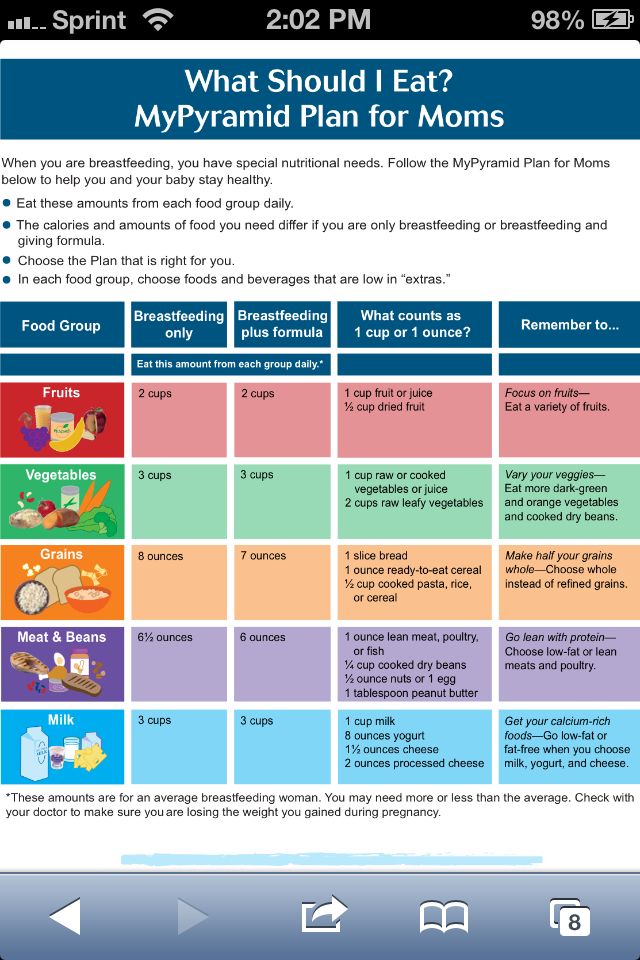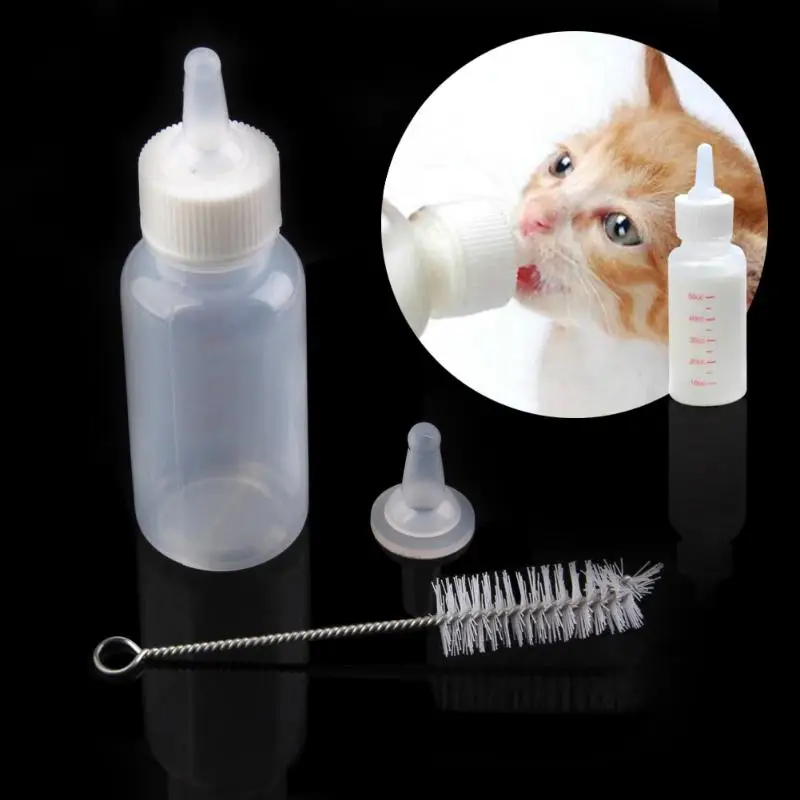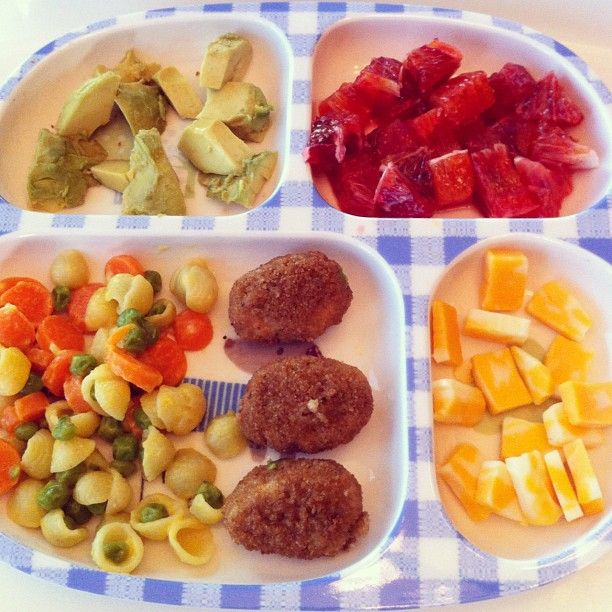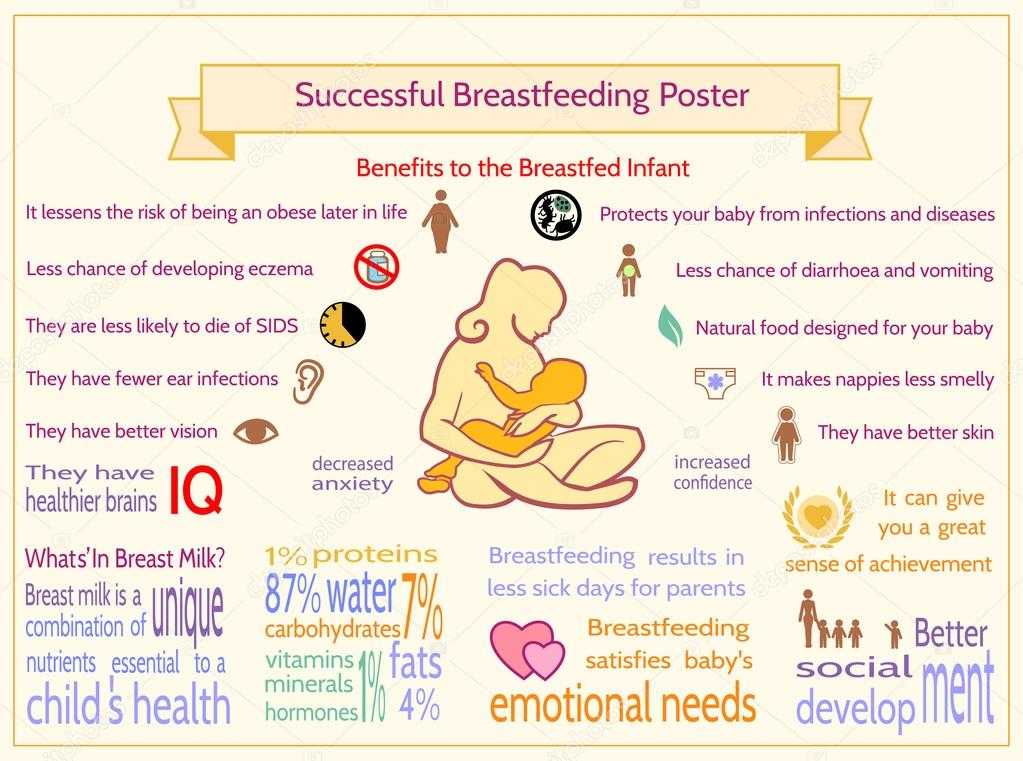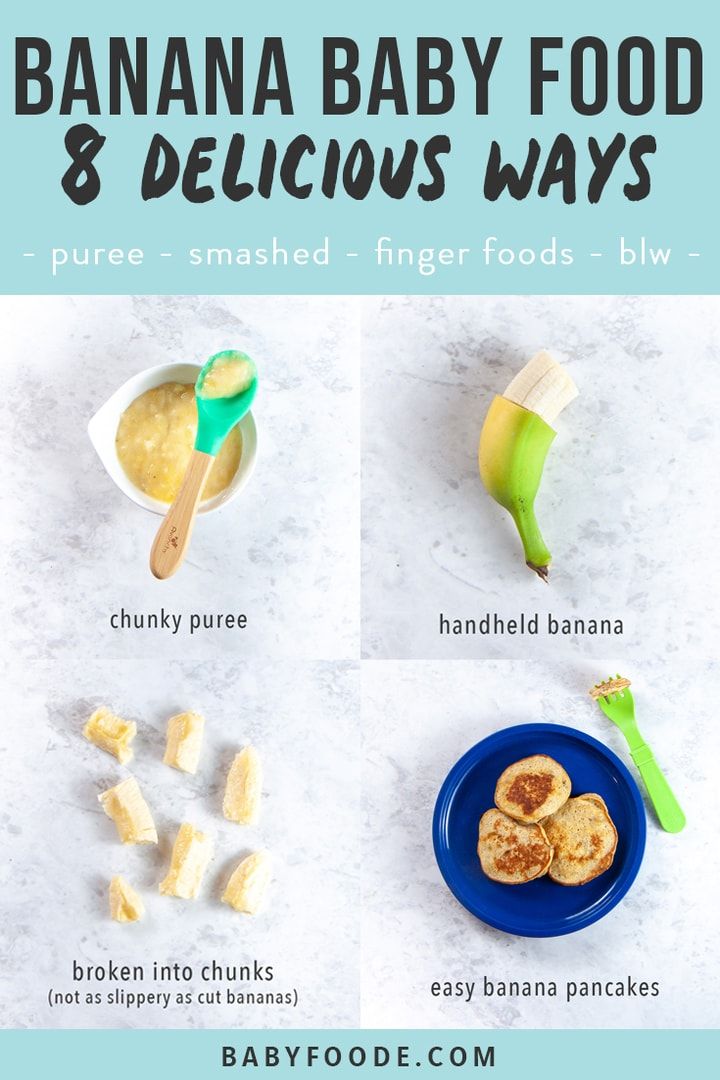What should i feed my baby
How much breast milk should a newborn eat?
How much breast milk a baby drinks varies from baby to baby and from one month to the next. A newborn eats less than an ounce of breast milk per feeding at first, but by the time they're 1 month old, babies usually drink about 3 to 4 ounces eight times a day. Follow your baby's lead on how much and how often to feed them, and look for signs that your baby isn't getting enough breast milk (such as weight loss, fewer than six wet diapers daily, and dark-colored urine).
Whether you're nursing your baby or pumping breast milk for bottles, you'll want to make sure your baby is getting the right amount of milk.
Breastfeeding moms often worry that their baby isn't getting enough milk, especially at first. It's impossible to see how much your nursing baby is drinking. And if you're pumping to fill bottles for your baby, how much should you pump and put in a bottle for each feeding? Read on for recommendations and details.
How much breast milk should a newborn eat?
After their first sleepy 24 hours, most newborns nurse every two to three hours, or eight to 12 times a day. You may need to coax them awake if they fall asleep mid-feeding or wake your baby to feed if it's been more than four hours since their last feeding.
The American Academy of Pediatrics (AAP) and other experts recommend that you feed your newborn baby whenever they show early signs of hunger, such as smacking their lips or rooting around for your nipple.
How long your baby nurses at each session is very individual. Some newborns will fill their little tummies in five minutes flat, while others may take an hour to finish feeding. In general, though, breastfeeding newborns nurse up to 20 minutes or more on one or both breasts, while older babies may take 5 to 10 minutes on each breast. (Babies typically become more efficient – and your milk supply becomes more established – after a month or two.)
If you're bottle feeding, it should take about 10 to 20 minutes per feeding, depending on the amount of milk in the bottle. Let your baby decide when they're full.
Your baby may feed more frequently – and for longer periods – right before a growth spurt, often around age 2 to 3 weeks, 6 weeks, 3 months, and 6 months. This is called cluster feeding, and it helps signal your body to produce more milk for your growing baby.
This is called cluster feeding, and it helps signal your body to produce more milk for your growing baby.
How much milk should I be pumping?
In the first couple of days, your newborn may take only half an ounce at each feeding. Then they'll increase to 1 or 2 ounces per feeding. They'll eat as often as eight to 12 times every 24 hours.
At about two weeks until 1 month old, your newborn will take 2 to 3 ounces per feeding, eating about eight times a day, for a total of about 20 to 24 ounces.
Advertisement | page continues below
By 1 month old, babies average 3 to 4 ounces per feeding – every 3 to 4 hours – for a total of about 24 ounces of milk per day.
At about 2 months old, babies take about 4 to 5 ounces per feeding every 3 to 4 hours.
Once your baby is 3 to 4 months old, they'll likely drink about 24 to 30 ounces of breast milk a day – usually in 4- to 6-ounce feedings every 4 hours or so. (Babies who are a little bigger might need a bit more milk. )
)
If you'd like more specific guidelines, here's a simple formula that you can use to figure out how much milk your baby is likely to need during the early months.
Babies generally need 2.5 ounces of breast milk daily per pound of body weight for their first 3 or 4 months. To calculate the total:
1. Multiply your baby's weight in pounds by 2.5. This is how much milk your baby will need for one day. (Make sure you include every ounce. For example, if your baby weighs 8 pounds 8 ounces, the total weight would be 8.5 pounds.)
2. Divide the amount of milk your baby needs in a day by the number of feedings. This is how much milk to put in each bottle.
For example:
If your baby weighs 10 pounds, they'll need 25 ounces of breast milk per 24 hours (10 x 2.5).
If they're feeding 10 times per day, that would equal 2.5 ounces in each bottle (25 divided by 10). If they're feeding 8 times a day, each bottle would need to contain 3.13 ounces (25 divided by 8).
Of course, the amount that babies drink at each feeding varies – and you don't need to be quite so precise. You can round up a bit (say to the next half ounce) rather than measure fractions of ounces!
You also want to follow your baby's cues on when they're hungry or full.
If you're feeding your baby breast milk and supplementing with formula, talk with your baby's doctor. You can use the information here to tell whether your baby is getting enough milk, but your baby's feeding schedule may be a little different. Your baby might go longer between feedings, for example (because babies don't digest formula as quickly as breast milk).
How much breast milk should an older baby eat?
Once your baby starts eating solid foods (usually at around 6 months old), their intake of breast milk will gradually begin to decrease. Breast milk or formula should still provide your baby with the bulk of their nutrition, though, until they're 9 months to 1 year old. That's because they contain easily digestible vitamins, iron, and protein to help your baby grow.
From 6 to 8 months old, your baby will probably have 3 to 5 nursing sessions a day, or 3 to 5 bottles with 6 to 8 ounces of breast milk in each.
From 8 to 12 months old, your baby will probably have 3 to 4 nursing sessions a day, or 3 to 4 bottles with 7 to 8 ounces of breast milk in each.
As your baby develops, they're likely to spend less time overall at your breast and go longer between feedings. You may also find that your older baby – who's becoming more aware of the world – is more distracted while nursing. You might try nursing in a quiet, dimly lit room with minimum distractions.
Your baby may also have an occasional nursing strike – because they're teething, have a stuffy nose or ear infection, because your milk tastes different (because of hormonal changes or a medication, for example), or for no apparent reason. These strikes usually last between two and five days, though they can continue longer. Encourage your baby to nurse, and pump every few hours (or about as often as your baby usually nurses) to keep your milk supply up. If you're worried about your baby not gaining weight, talk with their healthcare provider.
If you're worried about your baby not gaining weight, talk with their healthcare provider.
Once your baby is 1 year old, they can drink whole cow's milk in a bottle or sippy cup. Keep in mind that while cow's milk is good for them, you don't want to overdo it or they won't have much appetite for other healthy foods. (Too much cow's milk can also lead to iron-deficiency anemia.) Sixteen to 24 ounces a day (2 to 3 cups) for a toddler should be just fine.
And of course, you can continue to nurse past age 1 if you and your child want to. Even though your toddler will get most of their nutrition from solid food, breast milk still provides calories, immune protection, vitamins, and enzymes.
There are many ways to tell if your baby is getting enough breast milk.
For example, if your breasts feel softer after nursing, that means your baby has emptied some of the milk that was making them firm. If your baby seems relaxed and satisfied for one to three hours between feedings, it's a good indication that their tummy is full.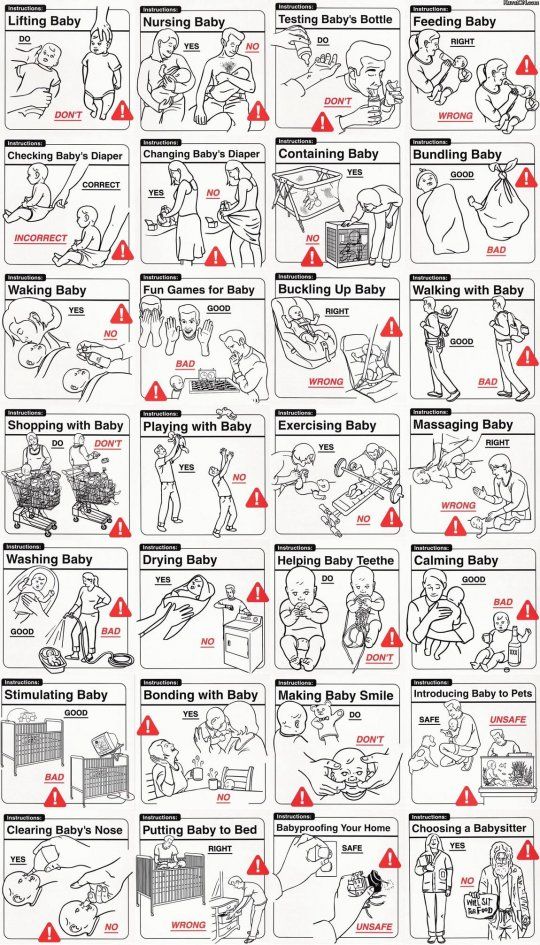
Other clues:
Wet diapers
This is why your doctor or midwife has you track your newborn's diapers. Your baby should wet 2 to 3 diapers each day in the first few days after birth. They should have at least 6 wet diapers a day after the first 4 to 5 days, after your milk comes in. Their urine should be colorless or pale yellow by 1 week old. (If their urine is pale or clear, they're getting enough liquid. If it's more concentrated, it may be a sign that they're low on fluids.)
Bowel movements
You'll track these for a while, too. Your baby should have one or two bowel movements each day on the first two days (these will be blackish, tarry stools) and at least two stools (which will be greenish to yellowy mustard color) on days three and four. By 1 week old, your baby should have at least 3 to 4 stools each day. These should be loose and yellow.
As your milk production increases, your baby may poop after every feeding.
Weight
Most babies lose up to 7 percent of their birth weight and then regain it by the time they're about 2 weeks old. After gaining back the weight they initially lost after birth, your baby should keep gaining.
After gaining back the weight they initially lost after birth, your baby should keep gaining.
Expect your baby to gain about 6 to 8 ounces a week for the first four months, then about 4 to 6 ounces per week from 4 to 7 months. By 5 months, most babies will double their birth weight. By their first birthday, most triple their birth weight.
Your baby's doctor will chart your baby's weight (as well as their length and head circumference) on a growth chart to make sure your baby is growing at a steady, appropriate rate over time.
Watch for these signs if you're concerned about your baby's milk intake:
- Your baby continues to lose weight. If your baby doesn't start gaining weight after five days, or if they start losing weight again any time after that, talk with their doctor.
- Your baby is wetting fewer than six diapers in a 24-hour period after the five days following their birth.
- Your baby has small, dark stools after their first five days.
- Your baby's urine is very dark, like the color of apple juice.

- Your baby is fussy or lethargic much of the time. They may fall asleep as soon as you put them to your breast but then fuss when you take them off.
- Your baby feeds for less than 10 minutes or more than 50 minutes at a time.
- Your baby appears to have a dry mouth or eyes.
- Your baby just doesn't seem satisfied, even if feedings consistently take longer than an hour.
- Your breasts don't feel softer after nursing.
- You rarely hear your baby swallow while nursing. (Some babies are very quiet feeders, so if all other signs are positive, don't worry about this one.)
What happens if my baby doesn't get enough breast milk?
Although most moms are able to provide their babies with all the milk they need, sometimes babies don't get enough. And when the problem isn't addressed, a baby can suffer from dehydration and failure to thrive, which are uncommon but serious problems.
If you're concerned that your baby isn't getting enough milk, call their doctor or talk to a nurse or lactation consultant.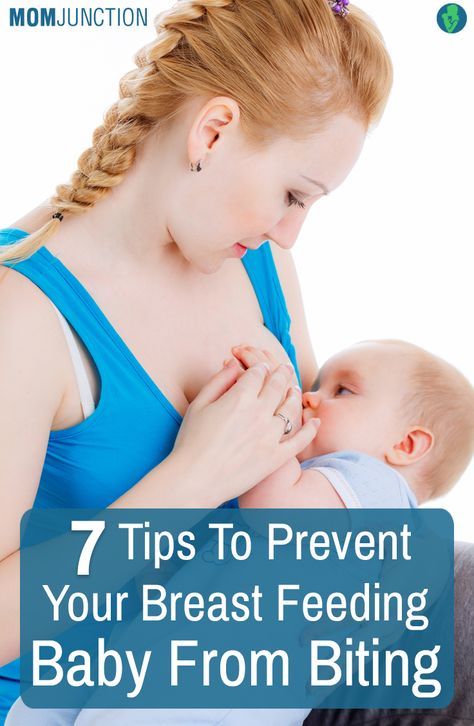 At these appointments, you'll typically feed your baby while the consultant observes you and gives you valuable tips for breastfeeding success. They may help with positioning and any latching problems, for example, and/or address milk production, if that's an issue. They can also help you with questions or problems you may be having with pumping breast milk.
At these appointments, you'll typically feed your baby while the consultant observes you and gives you valuable tips for breastfeeding success. They may help with positioning and any latching problems, for example, and/or address milk production, if that's an issue. They can also help you with questions or problems you may be having with pumping breast milk.
Breastfeeding Problem Solver
Find solutions to a variety of breastfeeding challenges, including nipple pain, low milk supply, and more.
Is it possible to feed my baby too much?
Yes, it's possible to give a baby too much formula or breast milk, especially if you're bottle feeding.
Drinking from a bottle often takes less effort than breastfeeding. If your bottle-fed baby wants just a little milk, they may get much more because of how fast the milk flows through the bottle's nipple.
If your baby gets too full, they may have stomach pains, and they may spit up or vomit.
To help your baby get just the right amount of milk, bottle-feed them slowly, holding the bottle level with the floor to avoid a flow that's too fast.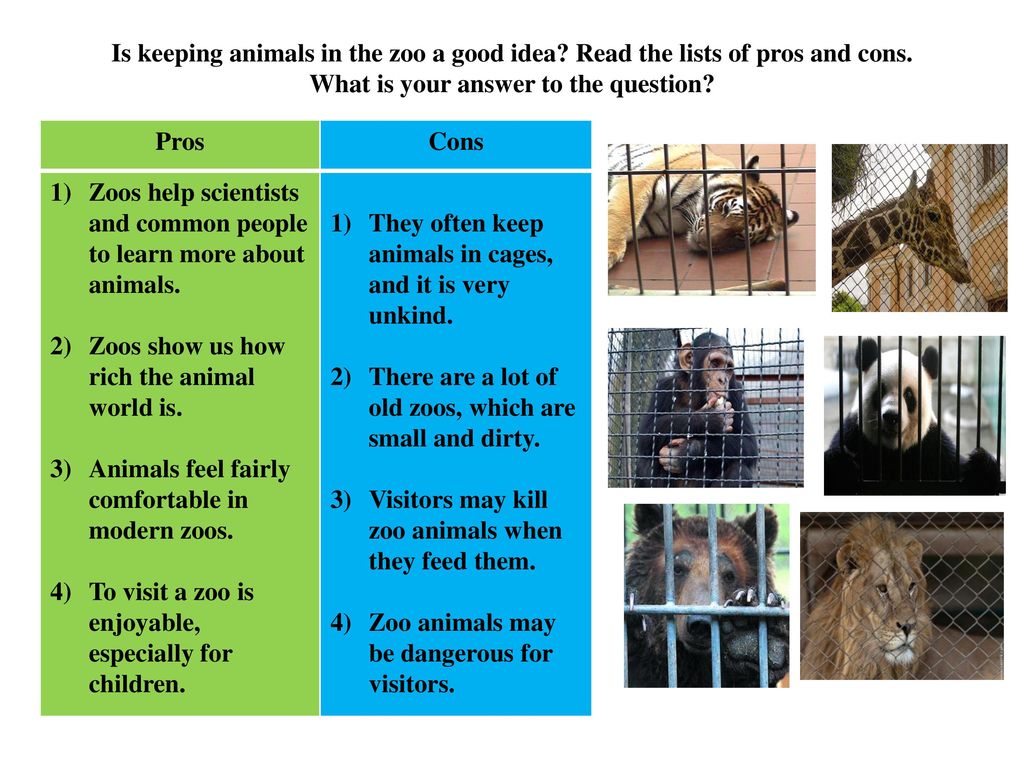 When your baby takes a natural break, tilt the bottle to stop the flow. This is called paced bottle feeding. Feeding your baby from a bottle should take about the same amount of time as feeding at the breast, about 10 to 20 minutes. This is especially important during the first couple of months, until your baby learns to pace themself.
When your baby takes a natural break, tilt the bottle to stop the flow. This is called paced bottle feeding. Feeding your baby from a bottle should take about the same amount of time as feeding at the breast, about 10 to 20 minutes. This is especially important during the first couple of months, until your baby learns to pace themself.
Learn more:
- How to burp your baby
- Age-by-age guide to feeding your baby
- Pacifier pros and cons
Baby formula feeding chart: How much formula by weight and age
Is your baby getting too much or too little formula? It's an important question that worries many new parents, especially those with newborns. When deciding how much formula to give your baby, it's important to watch their hunger cues as well as looking at guidelines based on age and weight. In general, before they're eating solids, babies need 2.5 ounces of formula per pound of body weight each day.
These guidelines are for babies who are exclusively formula-fed for the first 4 to 6 months, and then fed a combination of formula and solids up to age 1. If your baby is getting a combination of breast milk and formula, talk to their doctor for separate advice.
If your baby is getting a combination of breast milk and formula, talk to their doctor for separate advice.
Your pediatrician can tell you where your baby falls on the growth charts, make sure they're growing steadily on their own growth curve, and help you ensure that they're getting a healthy amount of formula. If you're ever worried about your baby's growth, behavior, or development, talk with their doctor.
How much formula for a newborn
For the first few days, offer your newborn 1 to 2 ounces of formula every 2 or 3 hours. (At first, newborns may only take a half ounce of formula at a time.)
After the first few days, give your newborn 2 to 3 ounces of formula every 3 to 4 hours.
Initially it's best to feed your formula-fed newborn on demand, whenever they show signs that they're hungry. Because your little one can't tell you when they want a bottle, you'll need to learn to read their hunger cues. Crying is often a late sign of hunger, so if you can, try to catch the earlier signs that it's time for a feeding.
Here are some hunger cues to watch for:
- Smacking or licking their lips
- Rooting (moving their jaw, mouth, or head in search of food)
- Putting their hands to their mouth
- Opening their mouth
- Fussiness
- Sucking on things
- Becoming more alert
- Crying
As time passes, your newborn will begin to develop a fairly regular feeding schedule. You'll become familiar with their cues and needs, and knowing when and how much to feed them will be much easier.
Formula feeding chart by weight
During the first 4 to 6 months, when your baby isn't eating solid foods, here's a simple rule of thumb: Offer 2.5 ounces of formula per pound of body weight every 24 hours, with a maximum of about 32 ounces.
Advertisement | page continues below
| Weight | Ounces of formula |
|---|---|
| 6 pounds | 15 fl oz every 24 hours |
| 7 pounds | 17.5 fl oz every 24 hours |
| 8 pounds | 20 fl oz every 24 hours |
| 9 pounds | 22. 5 fl oz every 24 hours 5 fl oz every 24 hours |
| 10 pounds | 25 fl oz every 24 hours |
| 11 pounds | 27.5 fl oz every 24 hours |
| 12 pounds | 30 fl oz every 24 hours |
These numbers aren't rigid rules. They offer a rough estimate for what your baby may need. Some babies will grow well while taking less than the recommended amount, while others consistently need more. Your baby's daily feedings will also vary according to their individual needs – in other words, they may want a bit more on some days and a bit less on others.
Formula feeding chart by age
Here are typical amounts per day based on age:
| Age | Ounces of formula |
|---|---|
| Full-term newborn | 2 ounces per bottle every 3 to 4 hours |
| 1 month old | 3 to 4 ounces per bottle every 3 to 4 hours |
| 2 month old | 4 to 5 ounces per bottle every 3 to 4 hours |
| 3 month old | 4 to 6 ounces per bottle every 3 to 4 hours |
| 4 month old | 4 to 6 ounces per bottle, 4 to 6 times a day |
| 5 month old | 4 to 6 ounces per bottle, 4 to 6 times a day |
| 6 month old | 6 to 8 ounces per bottle, 4 to 5 times a day |
| 7 month old | 6 to 8 ounces per bottle, 3 to 5 times a day |
From 8 months old until their first birthday, you can expect your baby to have 7 to 8 ounces per bottle, 3 to 4 times a day.
As your baby gets older – and their tummy gets bigger – they'll drink fewer bottles a day with more formula in each. It's important not to overfeed your baby so they'll stay at a healthy weight. Your baby shouldn't have more than 32 ounces of formula in 24 hours.
When they reach their first birthday, they can stop drinking formula and transition to cow's milk in a bottle, sippy cup, straw cup, or open cup. Limit your toddler to 16 to 24 ounces (2 to 2.5 cups) a day of whole milk, so they have room for other healthy foods.
Here are signs that your baby's getting all the formula they need:
- Steady weight gain. They continue to gain weight after their first 10 days and follow a healthy growth curve during their first year. (Most babies lose up to 7 to 10 percent of their birth weight in the first few days and then regain it by the time they're about 2 weeks old.)
- Happy baby. They seem relaxed and satisfied after a feeding.
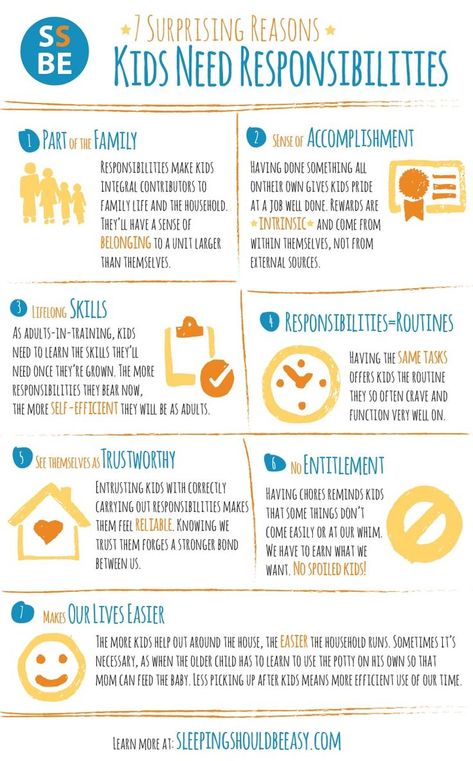
- Wet diapers. They wet two to three diapers a day in the first few days after birth. Over the next few days, the amount should increase to at least five to six wet diapers a day.
Babies are usually good at eating the amount they need, but bottle-fed babies can drink too much at times. Here are the signs that they're getting too much formula:
- Vomiting after a feeding may be a sign that your baby had too much. (Spitting up is normal, vomiting isn't.)
- Tummy pain after a feeding can also be a sign of overfeeding. If your baby draws up their legs or their tummy seems tense, they may be in pain. (See other possible reasons for stomach pain in babies.)
If your baby seems to want to eat all the time, even after finishing a bottle, talk to your pediatrician. Using a pacifier may help soothe their need to suck.
Formula-feeding tips
- In general, babies eat when they're hungry and stop when they're full, so resist the temptation to encourage your baby to finish each bottle.
 Overfeeding during infancy can contribute to obesity later in life.
Overfeeding during infancy can contribute to obesity later in life. - Don't respond to your baby's every cry with a bottle. They may be crying because their diaper is wet, they're cold or hot, they need to be burped, or they want to be close to you. (Learn more about why babies cry, and how to soothe them.)
- Your baby may be hungrier than usual during growth spurts. These typically occur 10 to 14 days after birth and around 3 weeks, 6 weeks, 3 months, and 6 months of age.
Read more:
- Formula Feeding Problem Solver
- How to safely store and use formula
Was this article helpful?
Yes
No
Breastfeeding on demand
You can often hear from a nursing mother: "I feed on demand, my baby requires a breast every 3.5 hours." Or: “I have always fed on demand. In a year, we already had 1 feeding in the evening, and my child calmly refused to breastfeed. Before talking about the demand of the child, it is necessary to find out what modern women mean when they say - "I breastfeed.
"
Modern mothers consider breastfeeding necessary for feeding their baby. Just for feeding. Breast milk is food, the mother supplies the baby with the nutrients necessary for growth and development. When a baby suckles at the breast, he eats. Breastfeeding makes sense only as a process of supplying proteins, fats, carbohydrates, vitamins and microelements.
During suckling, the baby receives the nutrients it needs with mother's milk. This is the absolute truth. There is another unconditional truth, which is not given any importance in modern society, it is not taken into account and is not considered. Breastfeeding for a child is communication with the mother. We need to figure out how the child understands feeding on demand? Can he understand anything at all? Is there any difference for him how he is fed, for 15-20 minutes after 3.5 hours or in some other way?
What is on-demand feeding
On-demand feeding of a newborn baby means putting it to the breast for every squeak or search. Squeak and search movements in newborns, even as early as the second or third day of life, begin to appear much more often than after 3.5 or 2.5 hours. The need for attachments increases rapidly, and by the 10-12th day of life, the need to attach to a child may occur 15-16 or more times a day. Applications vary in duration. The baby can fall asleep and sleep while sucking for, for example, 1.5-2 hours. Can release the breast after 1-2 minutes. And then ask her again. Why does a child need such frequent contact with his mother's breast?
Squeak and search movements in newborns, even as early as the second or third day of life, begin to appear much more often than after 3.5 or 2.5 hours. The need for attachments increases rapidly, and by the 10-12th day of life, the need to attach to a child may occur 15-16 or more times a day. Applications vary in duration. The baby can fall asleep and sleep while sucking for, for example, 1.5-2 hours. Can release the breast after 1-2 minutes. And then ask her again. Why does a child need such frequent contact with his mother's breast?
That's why. Being in the mother's belly, in a calm, familiar environment, listening to the noises of the mother's body, being in a warm, cramped, confined space, the baby sucked his fist, fingers, loops of the umbilical cord, swallowed amniotic fluid. Learned to suck and swallow. After birth, experiencing discomfort for any, the most insignificant reason, the baby tries to get rid of it. You can get rid of discomfort by getting into the usual conditions of a comfortable stay. The only place where the baby after birth can feel the sensations familiar to him is in the arms of the mother. The only familiar action is sucking. The only familiar taste and smell is the taste and smell of milk and lube in the areola. Milk and lubricant have an odor and taste similar to the taste and smell of amniotic fluid. Therefore, experiencing discomfort, the baby squeaks, or begins to look for an object to suck with his mouth. Ideally, it is immediately applied to the chest. The baby becomes warm, cramped, he hears the beating of his mother's heart, breathing, grumbling in the intestines, he sucks and feels the familiar taste and smell. If such an action happens constantly, the baby gains confidence, no matter what happens, he will solve all his problems with his mother. The place of comfort is now under the breast, and you can suck on the breast.
The only place where the baby after birth can feel the sensations familiar to him is in the arms of the mother. The only familiar action is sucking. The only familiar taste and smell is the taste and smell of milk and lube in the areola. Milk and lubricant have an odor and taste similar to the taste and smell of amniotic fluid. Therefore, experiencing discomfort, the baby squeaks, or begins to look for an object to suck with his mouth. Ideally, it is immediately applied to the chest. The baby becomes warm, cramped, he hears the beating of his mother's heart, breathing, grumbling in the intestines, he sucks and feels the familiar taste and smell. If such an action happens constantly, the baby gains confidence, no matter what happens, he will solve all his problems with his mother. The place of comfort is now under the breast, and you can suck on the breast.
This whole process is biologically justified. A newborn child does not feel the feeling of hunger, this feeling is not formed in him. It will begin to form at about two months of age. How to feed a creature that does not experience hunger ?! How to encourage him to take some action to get food? This can be done only at the expense of some other incentives. This stimulus for the newborn is constant bodily discomfort, thanks to which he wants to suckle all the time! The most intense, frequent and prolonged sucking in infants is observed in the first two or three months of life. It is in these first months that the main weight gain of the baby occurs.
It will begin to form at about two months of age. How to feed a creature that does not experience hunger ?! How to encourage him to take some action to get food? This can be done only at the expense of some other incentives. This stimulus for the newborn is constant bodily discomfort, thanks to which he wants to suckle all the time! The most intense, frequent and prolonged sucking in infants is observed in the first two or three months of life. It is in these first months that the main weight gain of the baby occurs.
Feeding in the first month
Baby falls asleep with breast in mouth, sleeps sucking for a while. Falling asleep deeply, lets go of the chest. After sleeping for a while, he wakes up, and is applied on waking. After sleep, he can stay awake for some time, for example, an hour and a half. During wakefulness, he may feel discomfort 2-3 times, for example, from a completely natural desire to pee, and having called his mother for help, having kissed for a couple of minutes, he will do his deeds. Then he will want to sleep, feel discomfort and, kissing his chest, will again fall asleep sucking. After some time, he will wake up and attach again. Then again a little "walk". And after some time, he will fall asleep at the chest again.
Then he will want to sleep, feel discomfort and, kissing his chest, will again fall asleep sucking. After some time, he will wake up and attach again. Then again a little "walk". And after some time, he will fall asleep at the chest again.
The daytime naps of a one-month-old infant feeding on demand vary in duration and number. There can be 4-6 dreams during the day, and they can last from 5-15 minutes to 2-2.5 sometimes 3 hours. "Around" each dream, the baby is applied to the chest, and applied between dreams several times. At night, the child falls asleep at the breast. Usually in the early morning hours, he begins to fuss and apply. In the morning, he almost never fully wakes up. The baby sleeps, from time to time, sucking on his mother's breast. Waking up in the morning, the baby is again applied to the chest. If you count all the attachments that have happened in a baby of one month of age, then approximately 16-20 attachments are obtained. This is how a newborn human cub behaves if it is given the opportunity to behave in accordance with physiological and psychological needs, which, by the way, are genetically determined. The child of the first months of life does not separate his personality from the personality of the mother and from her breast. Mom and her breasts, and everything connected with them, are the universe of the baby and himself.
The child of the first months of life does not separate his personality from the personality of the mother and from her breast. Mom and her breasts, and everything connected with them, are the universe of the baby and himself.
In most cases, a modern woman, being afraid to “accustom a child to hands”, strives to limit his requests for suckling. A pacifier and a bottle of tea or water come to her aid in this matter. They, too, can be sucked ... The need for sucking seems to be satisfied. But only the need for communication with the mother during suckling is not satisfied, the peculiar chain of mutual assistance and cooperation between mother and baby is destroyed, the formation of maternal affection and concentration is disrupted. Is the difference in the two actions noticeable to the reader: the baby cried, the mother took him, put him to her chest and started rocking him, or gave him a pacifier and started rocking the stroller, even with the words “Why are you crying, my sun?”
The modern woman who gives a pacifier and pumps a stroller is not a bad person deliberately harming an infant. She is simply in captivity of prejudices regarding the relationship between mother and baby. She does not know how to behave correctly, does not know what to do in accordance with the natural needs of the child. If you tell her what the child really needs, she will exclaim in horror: “What is it, don’t let him get away with?!” Indeed, the child of the first months of life must not be let off the hook. For a woman who does not know how to comfortably carry a baby, and who does not know how to feed him in various positions (sitting, lying, standing and even moving), this can be very difficult. Especially if she is not sure of the correctness of her actions.
She is simply in captivity of prejudices regarding the relationship between mother and baby. She does not know how to behave correctly, does not know what to do in accordance with the natural needs of the child. If you tell her what the child really needs, she will exclaim in horror: “What is it, don’t let him get away with?!” Indeed, the child of the first months of life must not be let off the hook. For a woman who does not know how to comfortably carry a baby, and who does not know how to feed him in various positions (sitting, lying, standing and even moving), this can be very difficult. Especially if she is not sure of the correctness of her actions.
An action that should become automatic for the mother of a newborn: when the baby cries or shows other signs of anxiety, put the baby to the breast.
What's next?
The baby is growing. A fairly stable rhythm of daytime sleep begins to form in him, and a 3-4-month-old baby behaves quite differently from a newborn.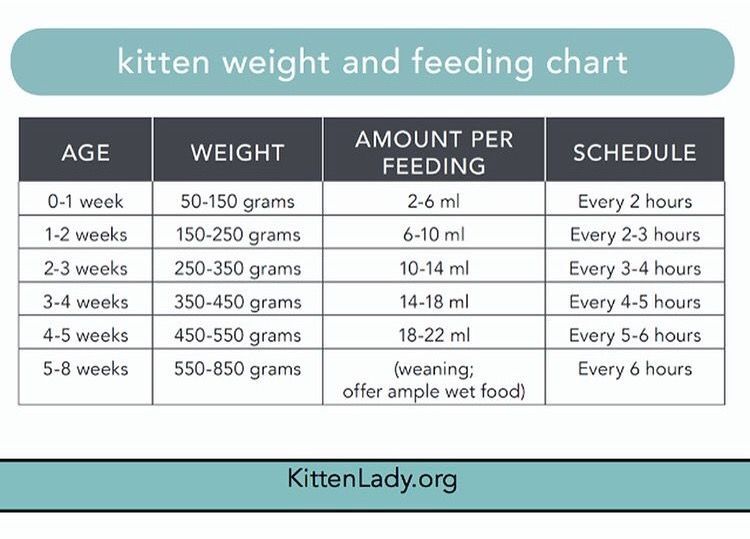 Feeding on demand at this age looks something like this...
Feeding on demand at this age looks something like this...
- At three months, the baby has 10-12 feeds during the day and 2-4 at night. There are frequent applications for a short time, but their number is reduced. There may be a long night break in feedings, about 5 hours, but this is very rare. Much more often the night break is 2.5-3.5 hours. By this age, the baby's body is noticeably rounded.
- At four months, the baby begins to breastfeed noticeably less frequently. The main feedings are associated with sleep: the baby suckles before bedtime, during awakening and during sleep, both daytime and nighttime. In this regard, he has a fairly accurate feeding regimen. And many babies stop breastfeeding when they wake up after daytime sleep, sometimes as early as 2.5-3 months.
- At five months, the baby has 8-10 daytime feedings and 2-3 nighttime, attachments as well as in the fourth month of life, are organized around dreams - the baby eats when going to bed and some babies suck during awakening.

- At six months, the feeding regimen changes. The most active sucking shifts to the last 2-3 hours before waking up from a night's sleep. The period of daytime wakefulness can be divided into two periods: in the morning, when the baby sucked during the night is rarely applied to the breast, and in the evening, when attachments become very frequent. In total, there can be 7-10 day applications and 3-4 night applications. At this age, the baby begins a period of acquaintance with new food - pedagogical complementary foods. Sometimes there are attachments associated with the introduction of complementary foods, the baby “washes down” samples of new food with mother's milk. But many children do not want to drink complementary foods. When complementary foods are introduced to an on-demand baby, it is never meant to replace feedings with complementary foods. This is practically impossible, because the main feedings of the baby are associated with sleep, and mother's breakfasts, lunches and dinners, during which the baby gets acquainted with new food, are located between the baby's dreams, during his wakefulness.

- At seven months, the frequency of application is about the same.
- At eight months, the feeding regimen changes. Since the baby shows high motor activity and is very busy exploring the surrounding space, in the daytime he forgets to breastfeed. In this regard, the number of daily feedings can be reduced to 6-8 times. The baby compensates for the reduction in daytime feedings by increasing the frequency and duration of nighttime feedings up to 6 times.
- In the second half of the year, babies who stopped breastfeeding when waking up after daytime naps recall this habit again. The baby’s daytime sleep in the second half of life, as well as in the region of a year and older, looks something like this: the baby falls asleep sucking, sleeps quietly for a while, for example 1-1.5 hours, then starts tossing and turning, fiddling, worrying, at this moment the mother lies down next to , gives him a breast and the baby can fill up 10-15-30 minutes sucking. Mom may well use this time for her own rest - lie down, read, while the baby sleeps while sucking.
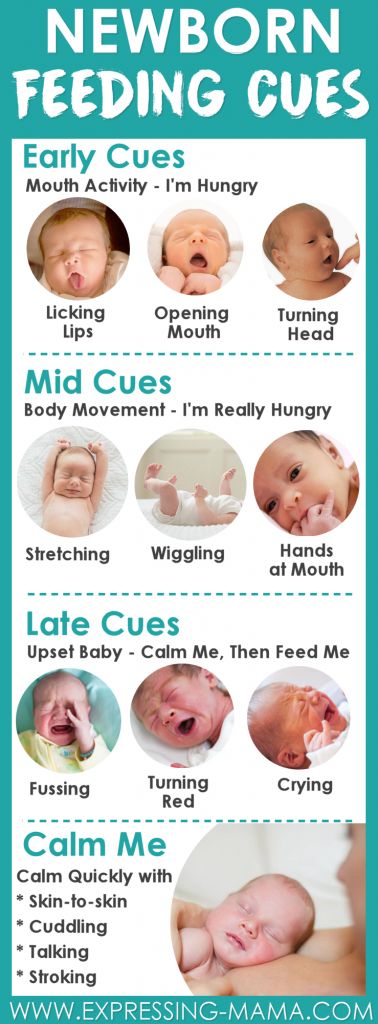 I know my mother, a lover of embroidery, who used this time specifically for embroidery ...
I know my mother, a lover of embroidery, who used this time specifically for embroidery ... - Breastfeeding becomes more frequent at nine to ten months. In the daytime, this is 4-6 full feedings and about the same number of attachments for various reasons. The baby has new reasons for attachment. If, during active actions to master the world, the baby fills a bump or gets scared, he calms down with his mother's breast. There may be situations when you can comfort the baby by sitting next to him and hugging him. At night, 4-6 feedings remain, the baby begins to suckle more actively in the morning between 3 and 8 hours.
- At eleven months, a baby can already have 2-3 complete complementary foods. Initiation to adult food in the mind of a child is not associated with breastfeeding: attachment to the mother's breast is something other than the desire to get enough of the product they like. As a rule, after the baby has eaten, he feels the need to attach himself to the breast.
 The number of daily feedings remains the same in the child, but the number of short-term attachments increases. There are active mid-morning feedings between 4 and 8 o'clock in the morning.
The number of daily feedings remains the same in the child, but the number of short-term attachments increases. There are active mid-morning feedings between 4 and 8 o'clock in the morning. - At ten or twelve months, the baby, if he is already walking, can sometimes breastfeed every time he comes to his mother, i.e. about every 15-30 minutes. Attachments around dreams and night sucking persist. Therefore, if a mother says that a child suckles once or twice a day, this means that there is no feeding at the request of the child. There are restrictions imposed by the mother, with which the baby has come to terms. He treats breast sucking like food, sucks on a pacifier or a finger to fall asleep or soothe, or falls asleep just like that, without calming down.
- At twelve months, the baby is applied in about the same way.
- At the age of one and a half years, there may already be one daytime nap, so there are fewer attachments associated with sleep. Preserved for morning sucking.
 The baby is very free with his mother's breasts. Sometimes it happens that he comes up to suck just for fun. For example, like this: he comes up, climbs on his knees, looks into his mother’s face, smiles, starts to swarm in his shirt, gets breasts, smiles at his breasts, sucks for 30 seconds and leaves.
The baby is very free with his mother's breasts. Sometimes it happens that he comes up to suck just for fun. For example, like this: he comes up, climbs on his knees, looks into his mother’s face, smiles, starts to swarm in his shirt, gets breasts, smiles at his breasts, sucks for 30 seconds and leaves.
As for the number of feedings per day when feeding a child on demand, their number is almost never less than 12. A newborn has 12 or more attachments, mostly they are all associated with dreams. And a child, say 1.5-2 years old, can also have about 12 attachments, only 3-4 are associated with sleep, and the rest are short-term attachments for various reasons. I suggest to all mothers reading this text - do not count the application, do not notice their duration. Breastfeed your baby as often as he asks, when you feel the need to.
Moms who don't think about breastfeeding without looking at the clock may get the impression that when breastfeeding on demand, the mother can do nothing but feed the baby. This is wrong. After the birth of a baby, a mother begins another life, she is called life with a baby. That's all. The child is with the mother, not the mother with the child! Feel the difference! You need to be able to organize your life in a different way, in the first months, of course, the help of loved ones is very necessary. In the tradition of many peoples, it was customary for the first 40 days after childbirth to remove a woman from any housework and household chores, she was engaged only in a child. In some nations, objects that the mother of a newborn touched were considered “unclean”, therefore, they preferred to protect the mother from the rest of the household, allocating her a separate “corner” of the house, where no one bothered her and she did not interfere with anyone. Among the Slavs, such a restrictive custom was called a six-week. By 1.5-2 months, the rhythm of daytime dreams begins to form, and the baby has a kind of “regime”, the mother becomes more free.
This is wrong. After the birth of a baby, a mother begins another life, she is called life with a baby. That's all. The child is with the mother, not the mother with the child! Feel the difference! You need to be able to organize your life in a different way, in the first months, of course, the help of loved ones is very necessary. In the tradition of many peoples, it was customary for the first 40 days after childbirth to remove a woman from any housework and household chores, she was engaged only in a child. In some nations, objects that the mother of a newborn touched were considered “unclean”, therefore, they preferred to protect the mother from the rest of the household, allocating her a separate “corner” of the house, where no one bothered her and she did not interfere with anyone. Among the Slavs, such a restrictive custom was called a six-week. By 1.5-2 months, the rhythm of daytime dreams begins to form, and the baby has a kind of “regime”, the mother becomes more free.
For a mother who can't imagine breastfeeding without looking back at the clock, and who is sure that the “right” baby is the baby lying quietly in her crib all the time, feeding on demand will be a complete hassle.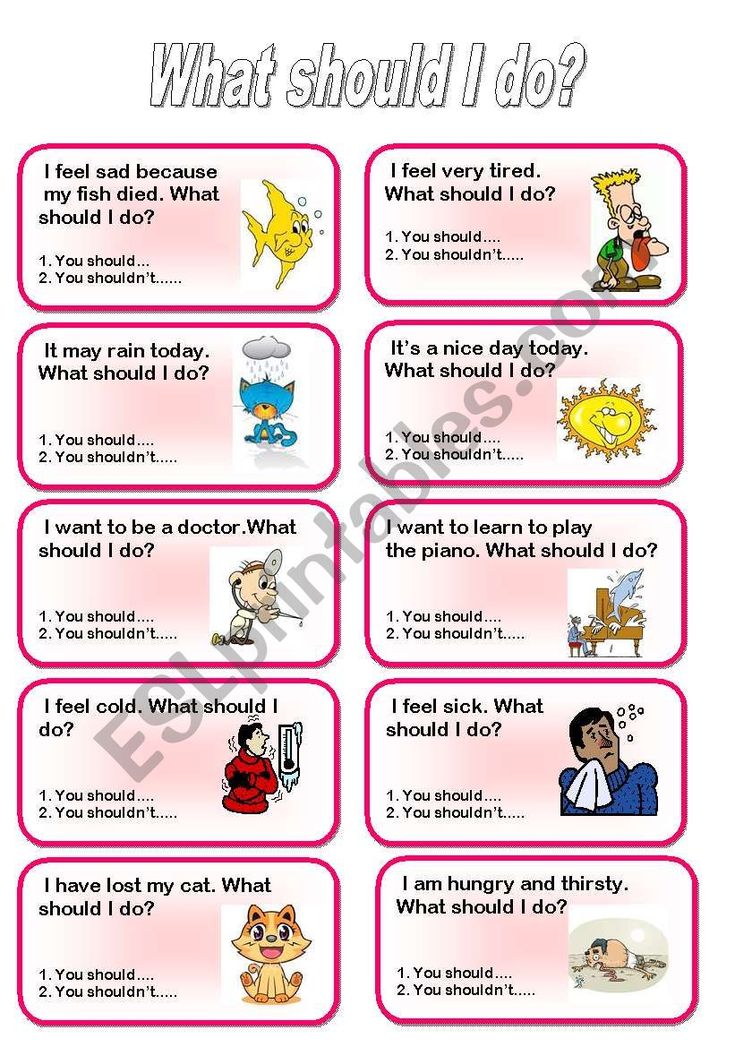 It will be much easier for such a mother if she stops looking at the clock and ties the baby to herself with a large scarf or uses a patchwork holder (sling). It will become easier for her if she stops running between the nursery and the kitchen, but takes the baby with her to the kitchen and carries him around the house with her, doing housework, in a box, a cradle, a special chair, if she tries not to put him off often, and pick up as soon as possible, postponing the baby only in case of emergency and not for long.
It will be much easier for such a mother if she stops looking at the clock and ties the baby to herself with a large scarf or uses a patchwork holder (sling). It will become easier for her if she stops running between the nursery and the kitchen, but takes the baby with her to the kitchen and carries him around the house with her, doing housework, in a box, a cradle, a special chair, if she tries not to put him off often, and pick up as soon as possible, postponing the baby only in case of emergency and not for long.
Breastfeeding is not the same as house arrest. In the conditions of modern society, it is possible to organize the exit of a nursing mother to work from about 6 months of age of the baby. If necessary, you can start working from the age of 4 months, but, of course, it is better not every day of the week and not full time. It is the responsibility of a breastfeeding consultant to help a mother organize her return to work.
Sometimes, when I advise mothers on breastfeeding, I suggest that they forget for a second that they are already living in the 21st century.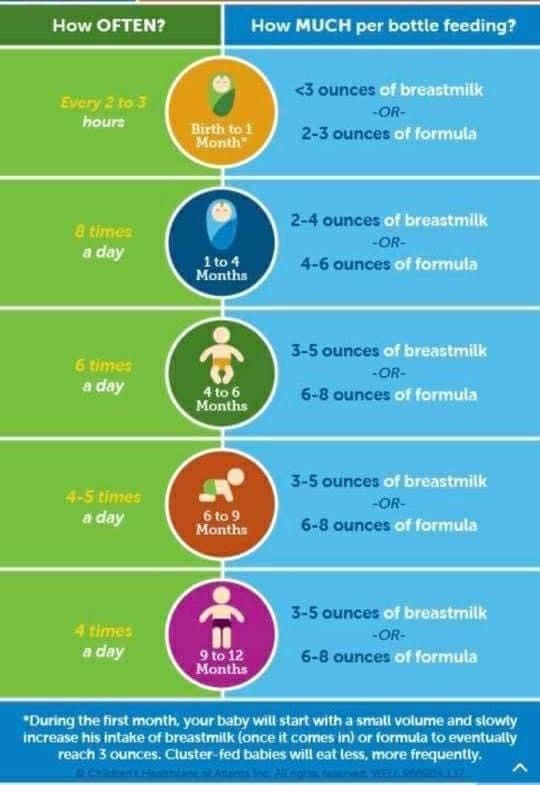 I propose to return, for example, to the cave and ask what they will do if the child woke up at night, how to calm him down? If you are walking through the forest and trying not to attract the attention of predators, how to make the baby silent? If the child is thirsty, what will you give him? What is the baby used to, for thousands of years of its existence? To the fact that he sleeps on his mother while she wanders through the forest with a digging stick in search of roots, and wakes up when mother stops. Since mom stopped, then there is time to wake up and suck. Therefore, even now the child sleeps well, tied to the mother with a patchwork holder, wakes up when the mother, having done a few household chores, sits in a chair to take care of the baby.
I propose to return, for example, to the cave and ask what they will do if the child woke up at night, how to calm him down? If you are walking through the forest and trying not to attract the attention of predators, how to make the baby silent? If the child is thirsty, what will you give him? What is the baby used to, for thousands of years of its existence? To the fact that he sleeps on his mother while she wanders through the forest with a digging stick in search of roots, and wakes up when mother stops. Since mom stopped, then there is time to wake up and suck. Therefore, even now the child sleeps well, tied to the mother with a patchwork holder, wakes up when the mother, having done a few household chores, sits in a chair to take care of the baby.
Some mother, reading about the cave, will be offended, saying that she is a civilized creature. But please think. Man, mother's breast and mother's milk have been created by evolution over millions of years. They are made for each other. Baby food has created progress and more recently. The skills of motherhood and breastfeeding have also been lost by our society quite recently. A person is not physiologically adapted to artificial feeding and a pacifier. The mother's breast will not produce enough milk at 6-7 feedings per day. Nature did not know, when creating man as a mammal, that the time would come when the need for breastfeeding would be satisfied by some kind of pacifiers and nipples.
Baby food has created progress and more recently. The skills of motherhood and breastfeeding have also been lost by our society quite recently. A person is not physiologically adapted to artificial feeding and a pacifier. The mother's breast will not produce enough milk at 6-7 feedings per day. Nature did not know, when creating man as a mammal, that the time would come when the need for breastfeeding would be satisfied by some kind of pacifiers and nipples.
Changes that occur during the formation of the personality of a child who did not have full contact with the mother during prolonged breastfeeding are noted by modern research by psychologists and sociologists. These are changes with a minus sign. It would be better if they were not, these changes.
Breastfeeding is important not only for the baby, it is also important for the mother. During on-demand feeding, the woman's feelings change, a stronger attachment to the baby is formed, the woman becomes more sensitive to the needs of the baby. Deeper affection and understanding are not only preserved in infancy. They persist for life. For clarity, imagine what happens to a woman’s feelings if she tries to “withstand” a child, endures his crying, anxiety. What happens to a woman if she uses the recommendation from one very popular parenting book: "Go to the child if he cries for more than 15 minutes"? Speaking in abstract terms, humanity is interested in reviving the practice of breastfeeding. The revival of this practice is impossible without mothers realizing the true reasons for the child's need for attachment to the breast.
Deeper affection and understanding are not only preserved in infancy. They persist for life. For clarity, imagine what happens to a woman’s feelings if she tries to “withstand” a child, endures his crying, anxiety. What happens to a woman if she uses the recommendation from one very popular parenting book: "Go to the child if he cries for more than 15 minutes"? Speaking in abstract terms, humanity is interested in reviving the practice of breastfeeding. The revival of this practice is impossible without mothers realizing the true reasons for the child's need for attachment to the breast.
Lilia Kazakova, pediatrician,
The head of the service consultants for breastfeeding and caring for the baby
I have the right: that parents should their children
Fresh number
RG-weeks
Rodina
Union
9000.04.2015 19: 40Rubric:
Society
Alexey Duel
- Mom, buy me this toy! - requires a child in the store.
"Give me something else, cheaper," my mother says softly. - And then, you already have a hundred of these accumulated!
- And I want this one, - the offspring persists. - I'm a child, you have to buy it for me!
Russian children have a very vague idea of their rights. But sometimes they still say that they “have the right” to something and parents are “obliged” to obey their requirements. "ProParent" decided not to leave the situation without clarification and asked the lawyer Lyubov Danilova, who works in the capital's "Lawyer Advice No. 24" (a branch of the Inter-Republican Bar Association) to tell what exactly the Russian child has the right to from the point of view of the law.
A child has certain rights from the moment of birth. So says Article 17 of the Civil Code of Russia. Babies can be sure that they have:
- The right to life, citizenship, name, patronymic and surname.
- The right to live and be brought up in a family is one of the most important rights of a child.

- The right to liberty and security of person, respect for dignity, protection of interests.
- The right to protection of rights and legitimate interests, to health protection and favorable environment.
- Ownership of property received as a gift or by inheritance.
It is clear that the legal capacity of infants - that is, the real opportunity to dispose of the opportunities that are guaranteed to them by law - is a very conditional thing. However, everyone around is obliged to take into account the interests of the kids, even if they do not yet know about it.
Children start to have real rights as they grow up. And every year there are more of them. Six-year-old children in Russia are guaranteed:
- The right to education - that is, the compulsory opportunity to go to school.
- The right to make small household transactions. For example, make purchases in a store for a small amount for cash. It can be food, stationery, toys.
 Of course, they will not sell a car or a computer to a child, but it is already possible to send it to the store for bread.
Of course, they will not sell a car or a computer to a child, but it is already possible to send it to the store for bread. - The right to independently dispose of funds provided for a specific purpose. Basically, it's pocket money. Parents are not obliged to issue them, but if they have shown generosity, then the child can decide for himself what exactly to spend them on.
- The right to express an opinion in resolving a matter that affects his interests. Actually, any kid expresses his opinion from birth, not much bothering with issues of legitimacy. But if the cries of babies can still be ignored, then parents are already obliged to listen to the opinion of six-year-olds. Moreover, after the child reaches the age of ten, his opinion can become decisive.
Seven-year-olds get another very pleasant right: to ride a bicycle on sidewalks, pedestrian and bicycle paths.
At the age of ten, from a legal point of view, the possibilities of a child expand even more. A person who celebrated the first round anniversary:
A person who celebrated the first round anniversary:
- Gives consent to his adoption or transfer to a foster family, as well as to changing his name, surname.
- Expresses an opinion as to which parent would like to live with in the event of divorce.
- Gets the right to speak in court.
The next stage of official maturation begins at the age of 14. Together with the passport the child receives:
- The right to change the surname, name and patronymic. All at once or one of the elements.
- The right to choose a place of residence (with parental consent).
- The right to dispose of their earnings, scholarships.
- Ability to exercise the rights of the author of a work of science, literature or art, invention.
- The right to cycle in the cycle lane. The bike path, mastered at the age of seven, happens in the park. The lane for cyclists is part of a full-fledged road, next to cars.
- The right to conclude an employment contract (with parental consent).
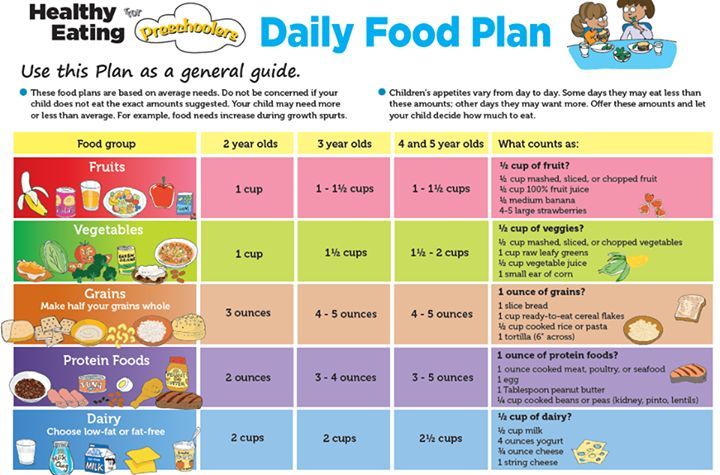
The last "childish" stage of empowerment occurs at age 16. From this age, a young man or girl is endowed with:
- The right to drive a moped.
- The right to marry. Here, however, there is a significant caveat: only if there are good reasons and only with the permission of local governments. In most cases, we are talking about teenage pregnancy. Although other life stories are possible.
Accelerated maturation
A child can become a full citizen without waiting for the age of eighteen. If he works under an employment contract or (of course, with the consent of his parents) is engaged in entrepreneurship, then the court or guardianship and guardianship authority may recognize the teenager as fully capable (emancipated).
If you have the right, then you are obliged
On the one hand, many children's rights cannot be realized if their parents do not provide them. For example, the rights to freedom and personal integrity, respect for dignity, health protection and many others.